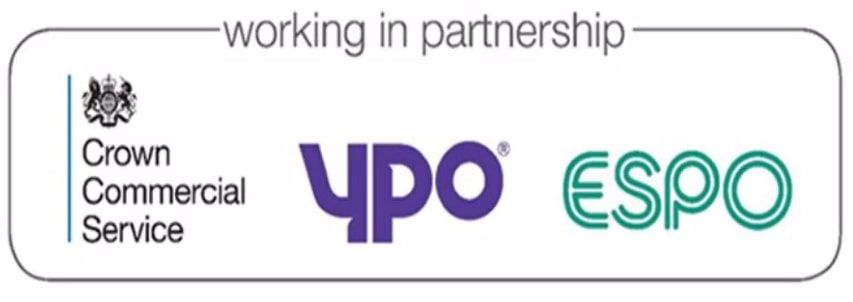Though it seems unthinkable, even the emergency services are fair game for cyberattacks - and since ‘smart’ printers, photocopiers, and multifunctional devices have become network endpoints in their own right, there is the risk of hackers exploiting unprotected machines to their own ends.
Without endpoint security, a printer’s operating system (OS) can easily be infiltrated via malware; allowing hackers access to every other device connected to its network. Once this is done, hackers are not only free to access any stored confidential employee information – but in the case of emergency services, the information of countless vulnerable people whose 999, 111, 112, and 101 calls are logged every day.
With so much confidential information at stake; bolstering print security is crucial for the emergency services – since doing so automatically removes an easy entry point to a network. By installing a program such as HP Wolf throughout an entire print fleet, not only is it ensured that the next breach or ransomware attack is stopped right in its tracks – but additional benefits include:
Proactive Data Protection
As with any organisation, GDPR compliance is imperative for the emergency services. HP Wolf goes beyond simple hard-drive encryption, proactively securing your entire network by conducting:
- automated monitoring, which continually observes patterns and trends in print data to assesses any anomalies,
- firmware validation, which determines that incoming commands are only accepted when coming from approved devices,
- real-time threat detection, meaning that in the event of an attack, HP Enterprise printers will automatically reboot – interrupting active breaches and restoring the device security settings to comply with pre-established company policies.
However, sophisticated ‘smart’ devices can still pose data protection risks even after they have reached their end-of-life; since information stored on hard drives can be accessed by anyone, providing they are not disposed of properly. As a Managed Print Services (MPS) provider, HP Inc. ensures that when devices are at their end-of-life, the hard drives are completely wiped and disposed of responsibly to ensure full GDPR compliance.
Regular Erasure Cycles
Personal data should be kept anonymous wherever possible – and with user-specific information such as usernames, print behaviour, history, and print job names being recorded with print management systems, certain procedures must be in place to ensure full GDPR compliance.
This is especially important in relation to the emergency services, due to the sheer amount of people operating across the organisation.
HP devices have ‘HP Secure Erase’ features as a standard – in order to ensure that print hard drives can be easily cleansed of unnecessary information. This can be completed manually or set up as a regular scheduled event; but regardless, so long as unnecessary personal data is routinely purged from the hard drive, it cannot pose a threat to data security.
Agile Print Security
Manual configuration is a risky approach to rely upon for your print security; especially when compounded by the other responsibilities attributed to IT departments. When it comes to the emergency services, the amount of confidential information being handled across so many devices would necessitate a consolidated fleet, all protected by one robust security system.
HP products have built-in security features as standard - which can be configured to align with precise security requirements, then implemented across an entire fleet with rapid, automatic device discovery. Being able to co-ordinate updated security measures through one central provider allows for greater ease, efficiency, and agility in a world where unanticipated IT security threats are a constant challenge.
Additionally, HP Inc. offer ongoing performance reports to its clients, which highlight areas for improvement and enable easy adjustment.

Internal Print Visibility
In high-pressure environments, it can be common for physical documents to be left unattended in print trays for long periods – which can pose a threat to data protection. However, this can be prevented by using print management software that enables ‘pull printing’. This means that when a print job is sent to the output device, the data is held on a secure server instead of being stored directly on the machine software – and can only be released when the user is physically using the print device.
By requiring authentication to print, this ensures that physical documents are only handled by the print job sender - meaning that documentation can always be accounted for. Not that this is the only benefit, since by storing print jobs on a secure server rather than the device itself, the danger of sensitive information being compromised through a printer-targeted cyberattack is completely nullified.
Complete Fleet Overview
Able to monitor and manage fleets of thousands of print devices from one central location, HP Inc.’s Managed Print Services (MPS) can proactively ensure device continuity on behalf of its clients. Since device uptime is of such critical importance to the emergency services, this would be of particular benefit– and would lighten the load for its internal IT departments.
With a constant overview of print devices, HP Inc. can ensure that firmware updates are continually kept up-to-date to enable full security – and that technical issues can be resolved quickly without requiring any notification from the client.
Ultimately, the emergency services must be able to operate at full efficiency – and implementing print security across a fleet of devices will remove multiple obstacles from their path; not least the persistent threat of cyberattacks. To learn more, visit: https://www.hp.com/uk-en/security/enterprise-print-security.html, or contact us using the form below.












































